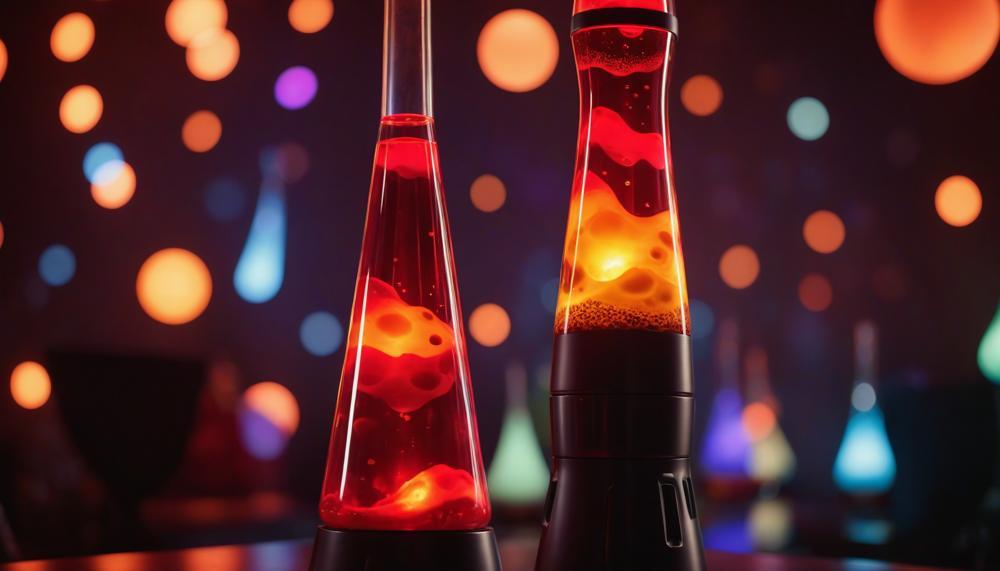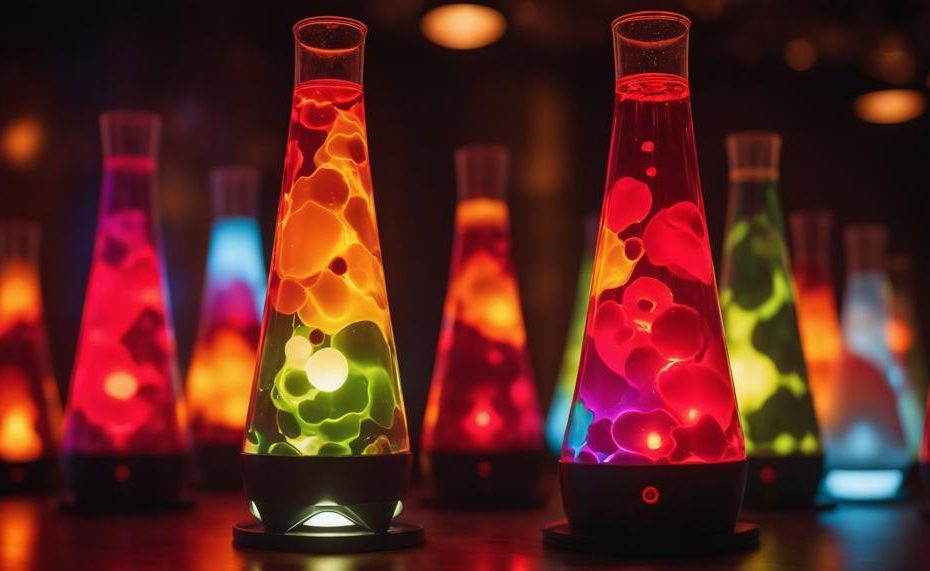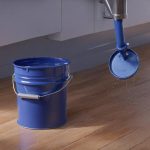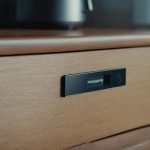Is your lava lamp stuck in a funk, refusing to mesmerize with its soothing motion? Don’t worry, it’s a common issue with a straightforward fix. Lava lamps, those iconic pieces of decor, can sometimes lose their magic when the wax stops flowing. This can often be attributed to overheating or a dislodged metal coil.
If your lamp has been on for more than six hours or is near a heat source, it might have overheated, causing the wax to form one big bubble at the top. Simply turning off the lamp and allowing it to cool completely should resolve this. However, if the problem persists, the metal coil at the bottom of the lamp could be out of place. Carefully using a potholder or towel to gently swirl the lamp can help the coil settle back into position, allowing the wax to flow freely once again.
Key takeaways:
- Overheating: Turn off the lamp and let it cool completely.
- Metal Coil: Use a potholder or towel to gently ease the coil back into place.
- Avoid Shaking: This can cause the lava to become cloudy or break apart.
With these simple steps, your lava lamp will be back to its groovy self in no time, adding that special touch of ambiance to your space once again.
Contents
- 1 List of the 7 Most Common Lava Lamp Problems
- 2 Troubleshooting Cloudy or Hazy Liquid
- 3 Fixing Lava That Won’t Flow or Rise Properly
- 4 Dealing with Overheating or Underheating Issues
- 5 Resolving Issues with Bubbles or Air Pockets in the Lava
- 6 Addressing Issues with the Lamp Base or Electrical Components
- 7 Cleaning and Maintaining Your Lava Lamp for Optimal Performance
- 8 Expert Tips for a Flawless Glow
- 9 Conclusion
List of the 7 Most Common Lava Lamp Problems
| Problem | Description | Solution |
| Unbalanced Surface | Lava lamp placed on an uneven surface | Ensure the lamp is on a flat, stable surface |
| Incorrect Temperature | Room temperature too cold or hot | Maintain optimal room temperature for proper function |
| Overheating | Left on too long or near a heat source | Turn off the lamp and let it cool completely |
| Bubbles or Air Pockets | Air trapped in the wax | Let it settle or gently swirl the lamp when warm |
| Cloudy Liquid | Caused by excessive heat or shaking | Keep away from heat sources and avoid shaking |
| Loose Connections or Frayed Wires | Electrical issues | Inspect and replace any damaged wires |
| Missing or Dislodged Metal Coil | Coil at bottom not in place | Carefully reposition the coil while the lava is melted |

Troubleshooting Cloudy or Hazy Liquid
To fix a cloudy or hazy lava lamp, follow these detailed steps:
- Gently Swirl the Lamp: Start by gently swirling the lamp. This helps to mix the contents without breaking the delicate balance of the liquid and wax. Avoid shaking it vigorously as this can worsen the cloudiness.
- Use Distilled Water: When filling or topping up your lava lamp, always use distilled water. Tap water contains minerals that can cause cloudiness over time.
- Replace the Liquid: If the lamp remains cloudy after swirling, it may be necessary to replace the liquid. Use distilled water and the appropriate lava lamp liquid. This should be done every year or two to maintain clarity.
- Avoid Direct Heat Sources: Ensure your lamp is not placed near direct heat sources like radiators or sunlight. Excessive heat can disrupt the balance of the liquid and wax, leading to cloudiness.
- Clean the Lamp Regularly: Clean the lamp with a soft cloth and mild glass cleaner. Avoid abrasive cleaners and excessive force which can scratch the glass and damage the liquid’s appearance.
- Check for Residue Build-Up: Avoid touching the lamp with bare hands as oils from your skin can leave residue that clouds the liquid. Use gloves or a cloth when handling the lamp.
- Ensure Proper Temperature and Placement: Make sure your lamp is on a level surface and at the right operating temperature. Incorrect temperature can prevent proper lava flow and contribute to cloudiness.
- Remove Bubbles or Trapped Air: Tilt and tap the lamp gently to release any trapped air bubbles which can contribute to a hazy appearance.
- Inspect Connections and Wires: Check for any loose connections or frayed wires that might be causing the lamp to malfunction. If you find any issues, consult a professional for repairs.
Fixing Lava That Won’t Flow or Rise Properly
If your lava lamp isn’t flowing or rising as it should, follow these troubleshooting steps to restore its mesmerising motion.
Check the Temperature:
Lava lamps need about 2-4 hours to reach the optimal operating temperature. If it’s too hot or too cold, the wax won’t flow properly. Ideal room temperature should be around 20-24°C.
Inspect the Heat Source:
Ensure the bulb is functioning correctly. If the bulb is loose or burnt out, replace it with one of the same wattage specified by the manufacturer. Check the lamp’s base to ensure it’s securely connected to the power supply.
Balance the Wax and Liquid:
The balance between the wax and the liquid is crucial. If the wax isn’t moving, the liquid may need adjusting. Add a small amount of distilled water if needed. If the wax is too dense, a tiny bit of Epsom salt dissolved in water can help improve flow.
Clean the Lamp:
Cloudy or hazy liquid can indicate contamination. Clean the globe using a mild soap solution, rinse thoroughly, and refill with distilled water if necessary. Ensure the lamp is completely dry before reassembly.
Replace Damaged Parts:
Check for any broken or damaged parts, such as the heating element or seals. Use replacement parts from the manufacturer to ensure compatibility.
Dealing with Overheating or Underheating Issues
Troubleshooting and fixing overheating or underheating issues with your lava lamp involves a few key steps. Here’s a detailed guide to help you resolve these problems effectively:
Identify the Issue:
- Overheating Symptoms: Lava moves excessively or remains at the top.
- Underheating Symptoms: Lava doesn’t flow or rise properly.
Check Bulb Wattage:
- Use the recommended wattage for your lamp. If it’s overheating, switch to a lower wattage bulb. For underheating, ensure the bulb is of the correct wattage or slightly higher if needed.
Adjust Lamp Position:
- Move the lamp to a cooler location if overheating, away from direct sunlight or other heat sources.
- For underheating, place the lamp in a slightly warmer spot.
Ensure Stable Surface:
- Make sure the lamp is on a level surface to allow even heating.
Regular Maintenance:
- Clean the lamp base and glass with a soft cloth and mild cleaner to ensure optimal performance.
Heat Source Inspection:
- Check the heat source for any damage or loose connections. If found, replace or repair immediately.
Resolving Issues with Bubbles or Air Pockets in the Lava
The short answer to fixing air bubbles or pockets in your lava lamp is by following these steps:
- Check Lamp Position: Ensure your lava lamp is placed on a stable, vibration-free surface.
- Regular Cleaning: Clean your lamp regularly to avoid impurities that obstruct the wax’s movement.
- Tilt the Lamp: Gently tilt the lamp back and forth to help release trapped air bubbles.
- Replace Wax or Liquid: If bubbles persist, consider replacing the wax or liquid in your lava lamp.
Addressing Issues with the Lamp Base or Electrical Components
Common issues with the lamp base or electrical components of a lava lamp can significantly affect its performance. Here’s a detailed look at these issues and how to address them:
| Issue | Description | Solution |
| Faulty Bulb | The bulb may burn out or not produce enough heat. | Replace the bulb with one of the appropriate wattage. Ensure it matches the manufacturer’s specifications. |
| Loose Wiring | Wiring inside the lamp base can become loose, causing intermittent power issues. | Inspect the wiring by turning off and unplugging the lamp. Tighten any loose connections. If unsure, consult a professional electrician. |
| Faulty Switch | The switch may wear out, leading to the lamp not turning on. | Replace the switch if it’s faulty. This can often be done with a simple replacement part from a hardware store. |
| Damaged Power Cord | A frayed or damaged power cord can prevent the lamp from working. | Replace the power cord. Make sure to use one that is compatible with your lamp model. |
| Overheating | Prolonged use or using a bulb with too high wattage can cause overheating, affecting the lamp’s functionality. | Allow the lamp to cool down and switch to a lower wattage bulb. Position the lamp in a cooler spot away from other heat sources. |
Cleaning and Maintaining Your Lava Lamp for Optimal Performance
Maintaining your lava lamp involves a few straightforward but essential practices to ensure it continues to function optimally and lasts for years. Here’s how you can keep your lava lamp in tip-top shape:
| Task | Tips | Details |
| Regular Cleaning | Use a soft cloth | Gently wipe the glass surface with a soft, lint-free cloth to remove dust and fingerprints. Avoid using harsh chemicals or abrasive materials that could scratch or damage the glass. |
| Temperature Management | Keep away from heat sources | Place your lava lamp away from direct sunlight and heat sources. Excessive heat can cause the wax to overheat and degrade over time, disrupting the lamp’s functionality. |
| Usage Duration | Limit operation time | Do not leave your lava lamp on for more than 8-10 hours at a time. Overuse can lead to overheating, which might damage the lamp’s components and alter the wax’s consistency. |
| Storage | Store in a cool, dry place | When not in use for extended periods, store your lamp in a cool, dry location. Avoid areas with high humidity or temperature fluctuations, which can affect the lamp’s materials and performance. |
| Safety | Ensure stable placement | Always place your lava lamp on a flat, stable surface to prevent it from tipping over. Ensure it is out of reach of children and pets to avoid accidents. |
| Electrical Components | Check wiring and bulbs | Regularly inspect the wiring and bulb. Replace any faulty bulbs with the correct type specified by the manufacturer. Ensure that connections are secure and not frayed or damaged. |
Expert Tips for a Flawless Glow
Achieving a flawless glow with a lava lamp involves understanding its basic operation, proper maintenance, and a bit of creativity. Here are some expert tips to ensure your lava lamp shines beautifully:
Understand the Basics
- Components: A lava lamp consists of a base with a light bulb and a glass globe containing colored wax and liquid. The bulb heats the wax, causing it to rise and fall.
- Function: The heat from the bulb causes the wax to expand and float. As it cools, it sinks back down, creating a mesmerizing effect.
Placement Matters
- Avoid Direct Sunlight: Direct sunlight can overheat the lamp, disrupting the flow and potentially damaging it. Place your lamp in a shaded area.
- Ambient Lighting: Use ambient lighting to enhance the glow without overheating the lamp.
Stability is Key
- Stationary Position: Keep the lamp in a stationary position. Moving or shaking it can cause the wax to clump and disrupt the flow.
Warm-Up Time
- Proper Heating: Allow your lava lamp to warm up for at least 45 minutes. This ensures the wax fully melts and flows smoothly.
Quality Bulbs
- Use Appropriate Bulbs: Use high-quality, low-wattage bulbs specifically designed for lava lamps. These provide the ideal amount of heat without overheating the lamp.
Regular Cleaning
- Dust-Free Globe: Clean the glass globe regularly with a soft cloth or sponge and mild soap. Avoid abrasive materials that can scratch the glass.
Experiment with Placement and Colors
- Height and Color Variations: Placing the lamp on a higher surface can enhance its visual impact. Experiment with different colored wax for unique effects.
Common Issues and Solutions
| Issue | Cause | Solution |
| Overheating | Lamp left on too long or near a heat source | Turn off the lamp, let it cool completely, and avoid prolonged use. |
| Wax Clumping | Shaking or moving the lamp | Keep the lamp stationary to maintain a smooth flow. |
| Missing Metal Coil | Coil dislodged at the bottom | Carefully tip the lamp to reposition the coil while the wax is melted. |
| Cloudy Liquid | Shaking or overheating | Let the lamp cool, then gently warm it up again without shaking. |
By following these expert tips, you can ensure your lava lamp provides a soothing, flawless glow, enhancing the ambiance of any room.
Conclusion
A lava lamp that won’t move can be a real mood dampener, but getting it back to its mesmerizing state is often straightforward. If your lamp has been on for more than six hours or sits near a heat source, it might have overheated. Overheating typically causes the wax to form a large, immobile blob at the top. To fix this, simply turn off the lamp and let it cool completely.
Another common issue is a dislodged metal coil at the bottom of the lamp, which is crucial for distributing heat evenly. If the wax isn’t flowing, use a potholder or towel to gently swirl the lamp, helping the coil settle back into position.
Avoid shaking the lamp, as this can cause the liquid to become cloudy or break apart the wax. By following these steps, you can restore your lava lamp to its groovy, flowing state, ensuring it continues to add that special touch of ambiance to your space.
For other common issues like unbalanced surfaces, incorrect temperatures, or electrical problems, remember to keep your lamp on a stable surface, maintain an optimal room temperature, and regularly inspect for loose connections or frayed wires.





